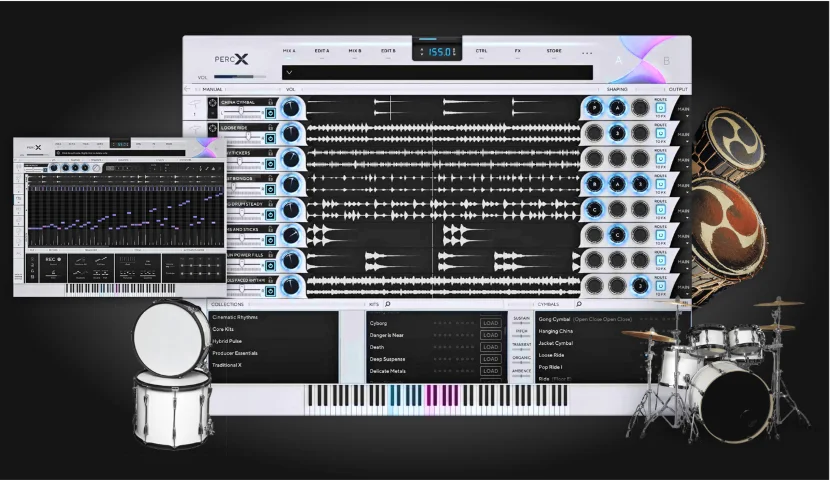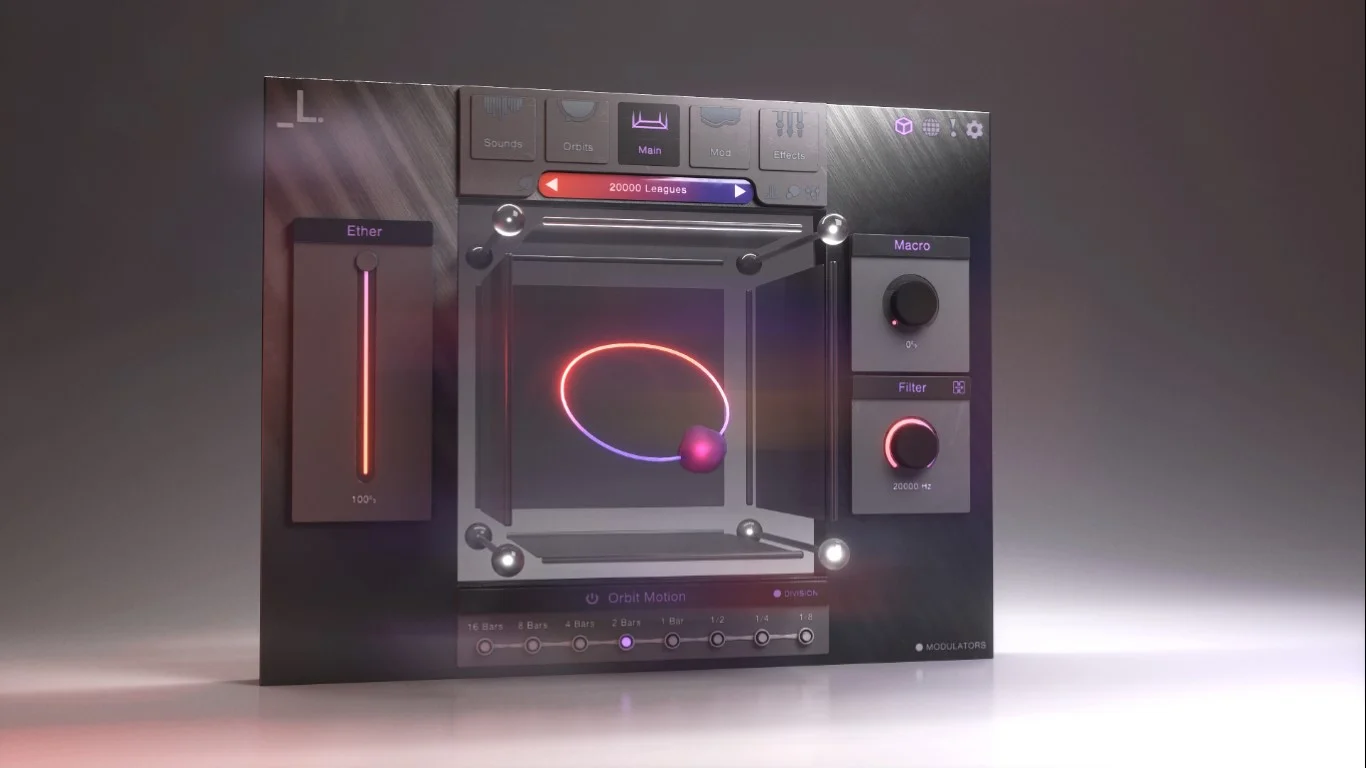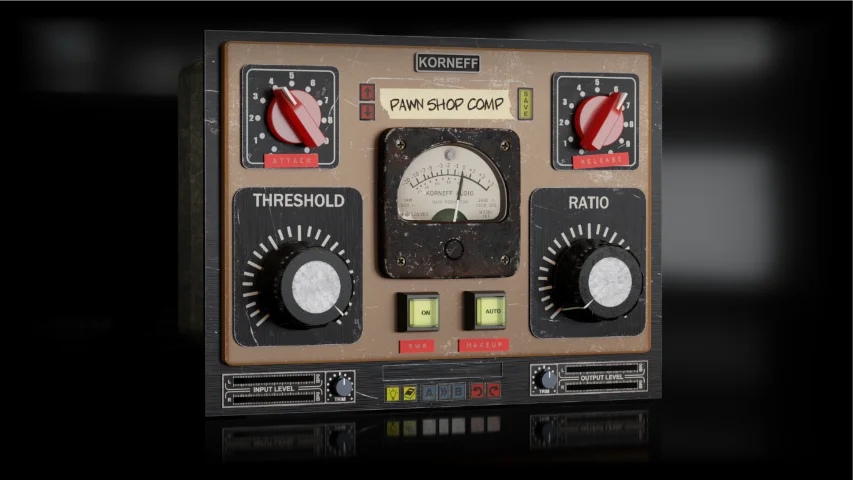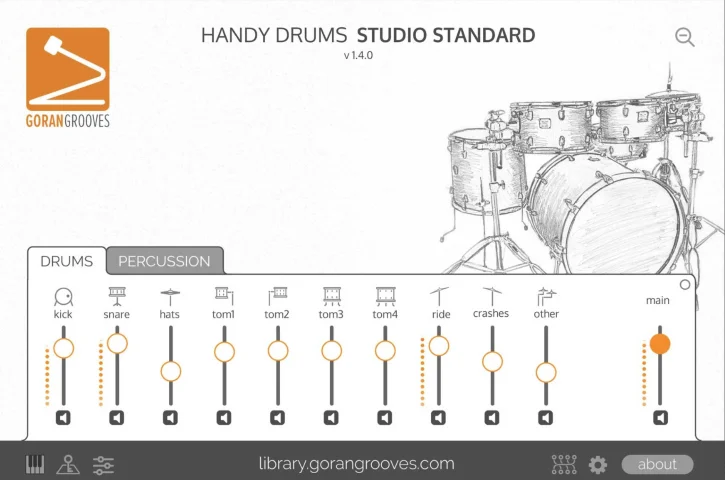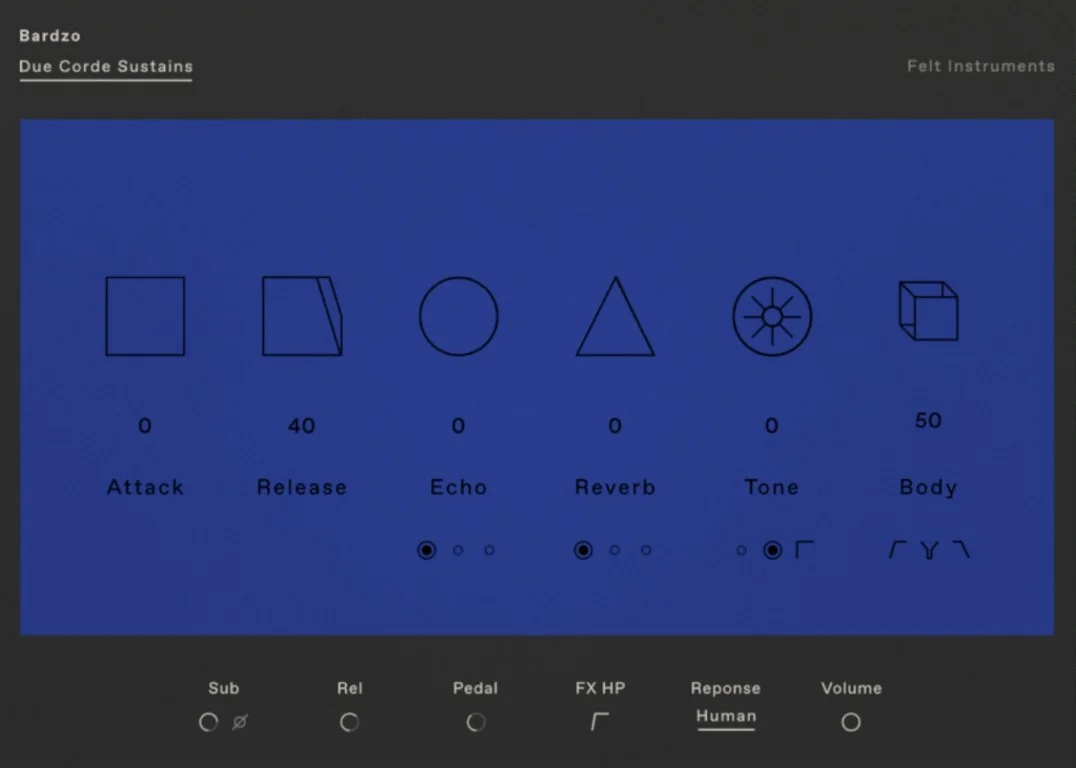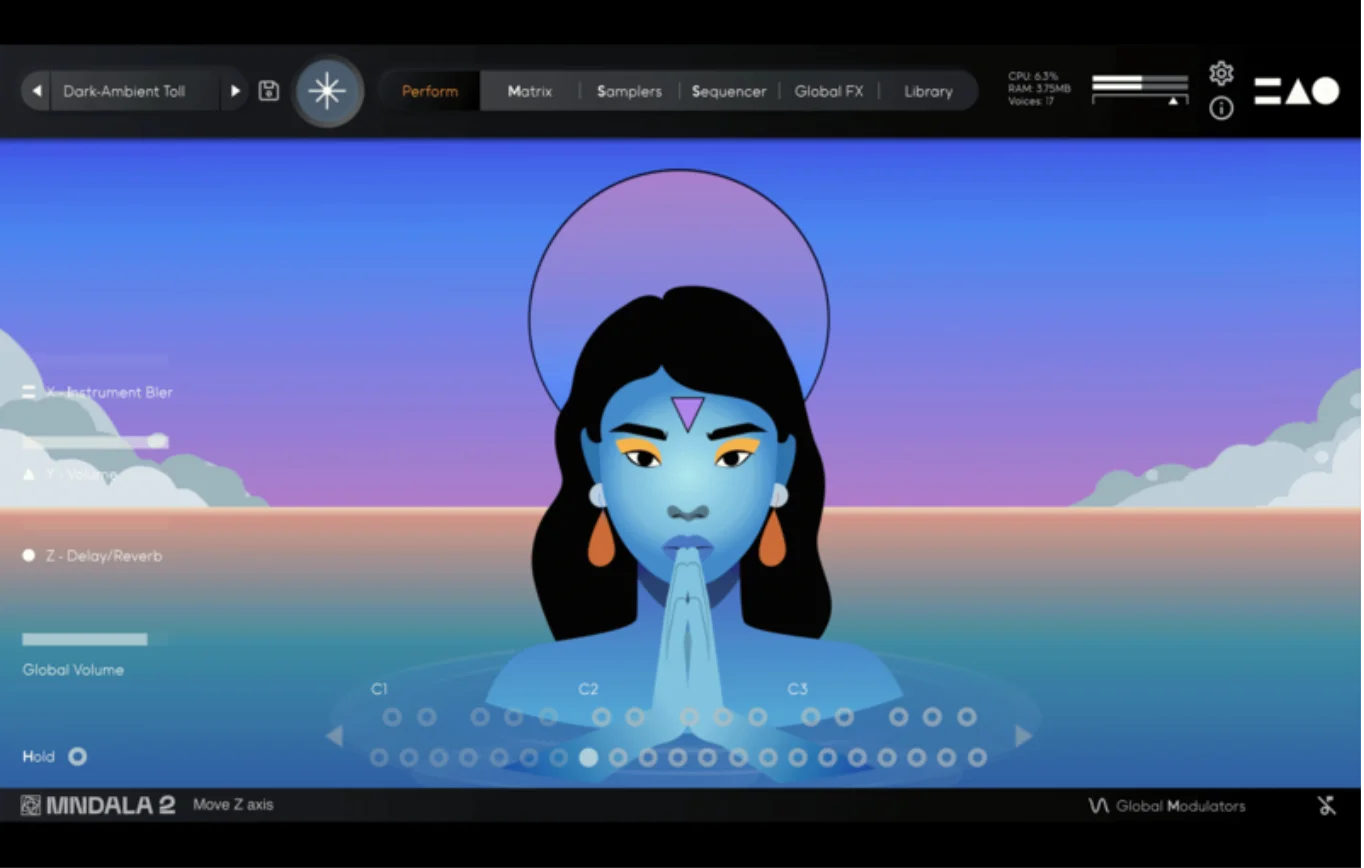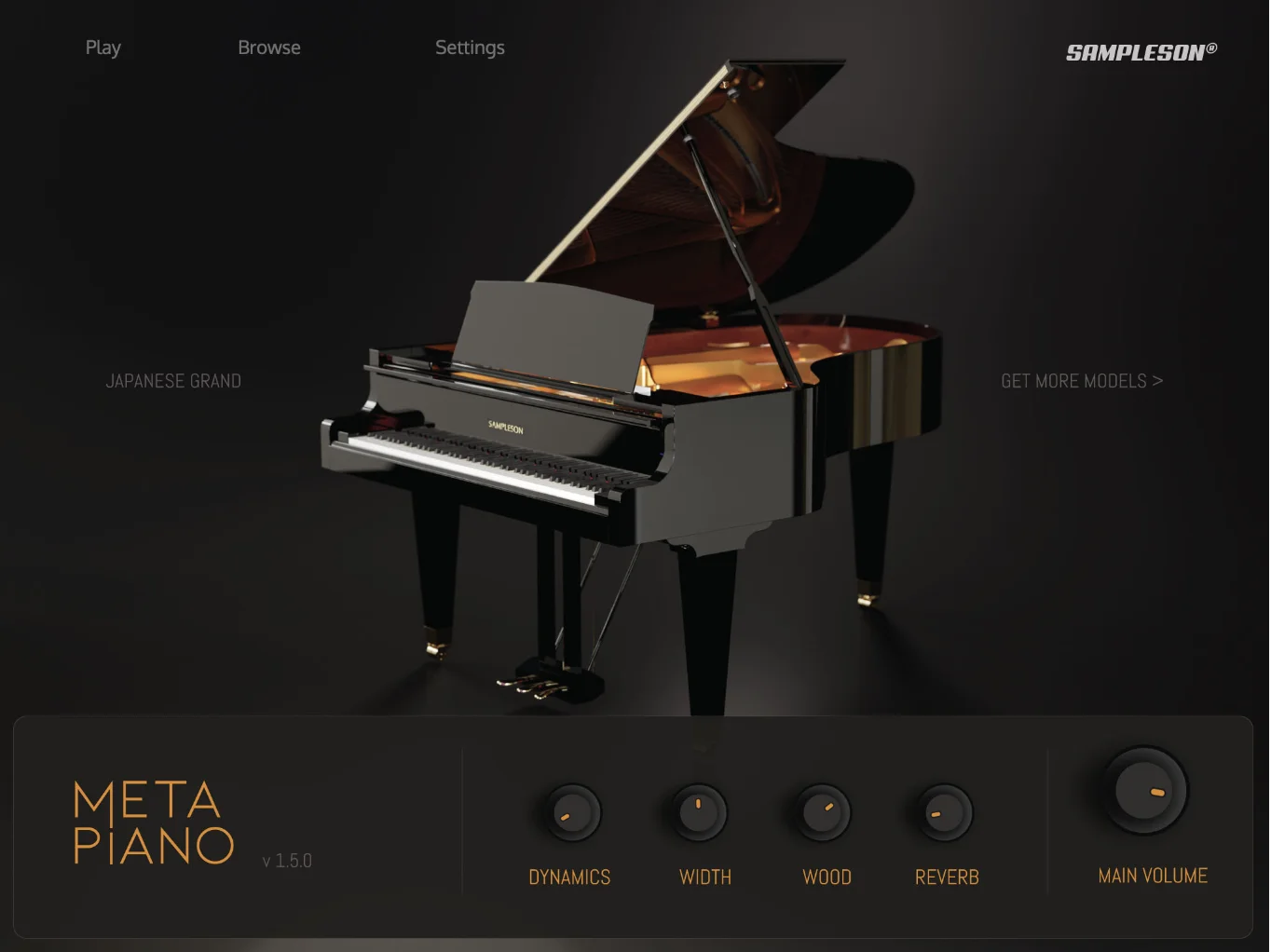The open source toolkit for building virtual instruments and audio effects
Download
Absolute Freedom
Compile your project as a native plugin (VST/AU/AAX) for macOS, Windows and Linux.
Feature Complete
Start development with powerful building blocks like disk streaming samplers, synths, FX modules and flexible modulation system.
Effective Workflow
Create an interface with the inbuilt WYSIWYG editor, DSP with a visual programming environment and write scripts using state-of-the-art IDE features.
Modular architecture
Assemble your plugin using drag & drop elements, use scripting for advanced customizations or dive into C++ for maximum flexibility.
Deployment Tools
Add Expansions to your plugin, use a native copy protection solution and use the HLAC compression for easy sample distribution.
Community
Get involved with an active and dedicated community of developers that will help you out when you get stuck along the way.
Getting to know
Testimonials Read what other developers think about working with HISE:
quote
quote
Features
Audio Modules
HISE provides a broad range of basic audio modules: Sound generators like oscillators and samplers, modulators like envelopes and LFOs and effects such as EQs and convolution reverbs.
Various auxiliary tools such as send effects, multichannel routing matrixes, and containers with flexible hotswap-functionality help you to create almost any audio plugin architecture.
More info: Modules
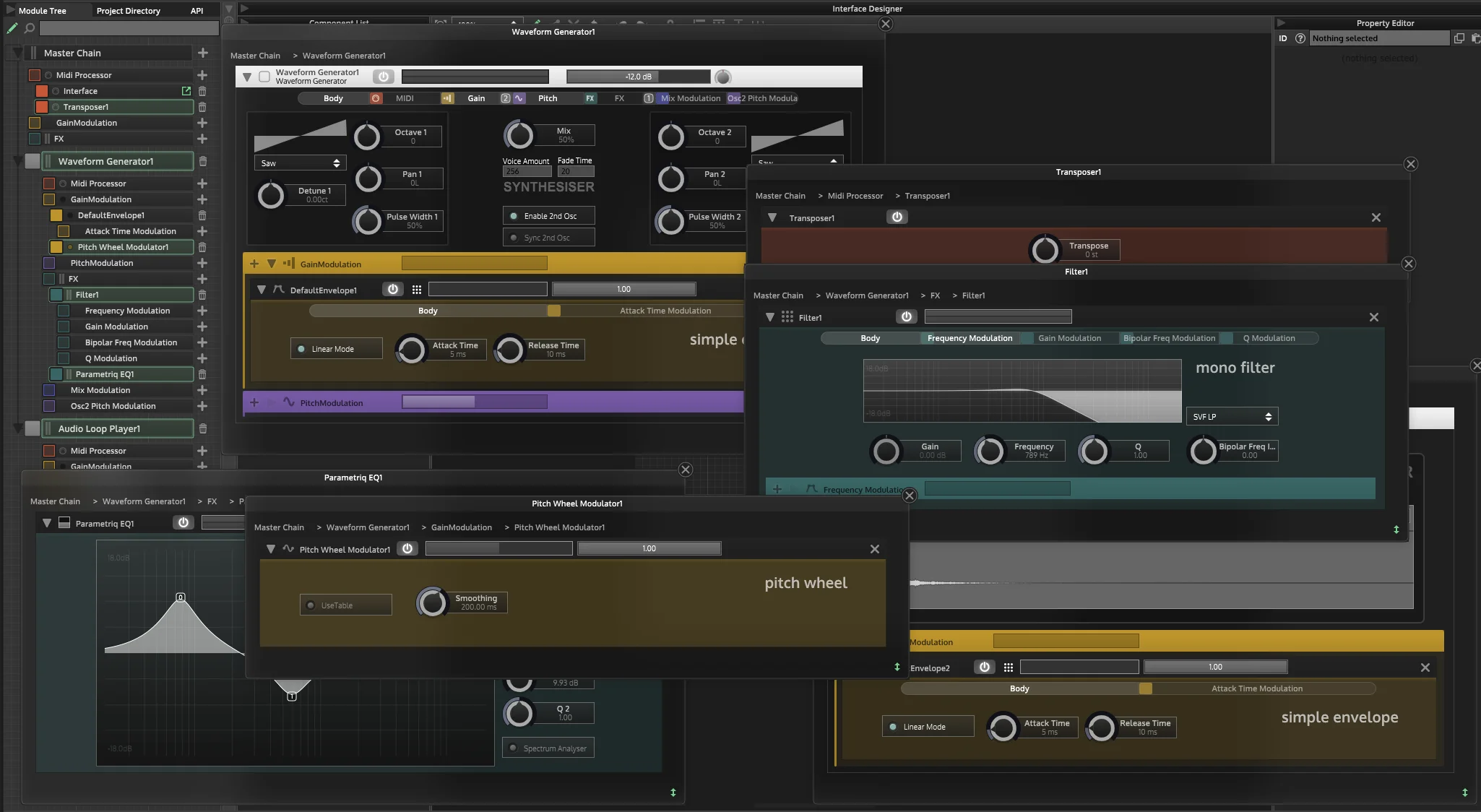
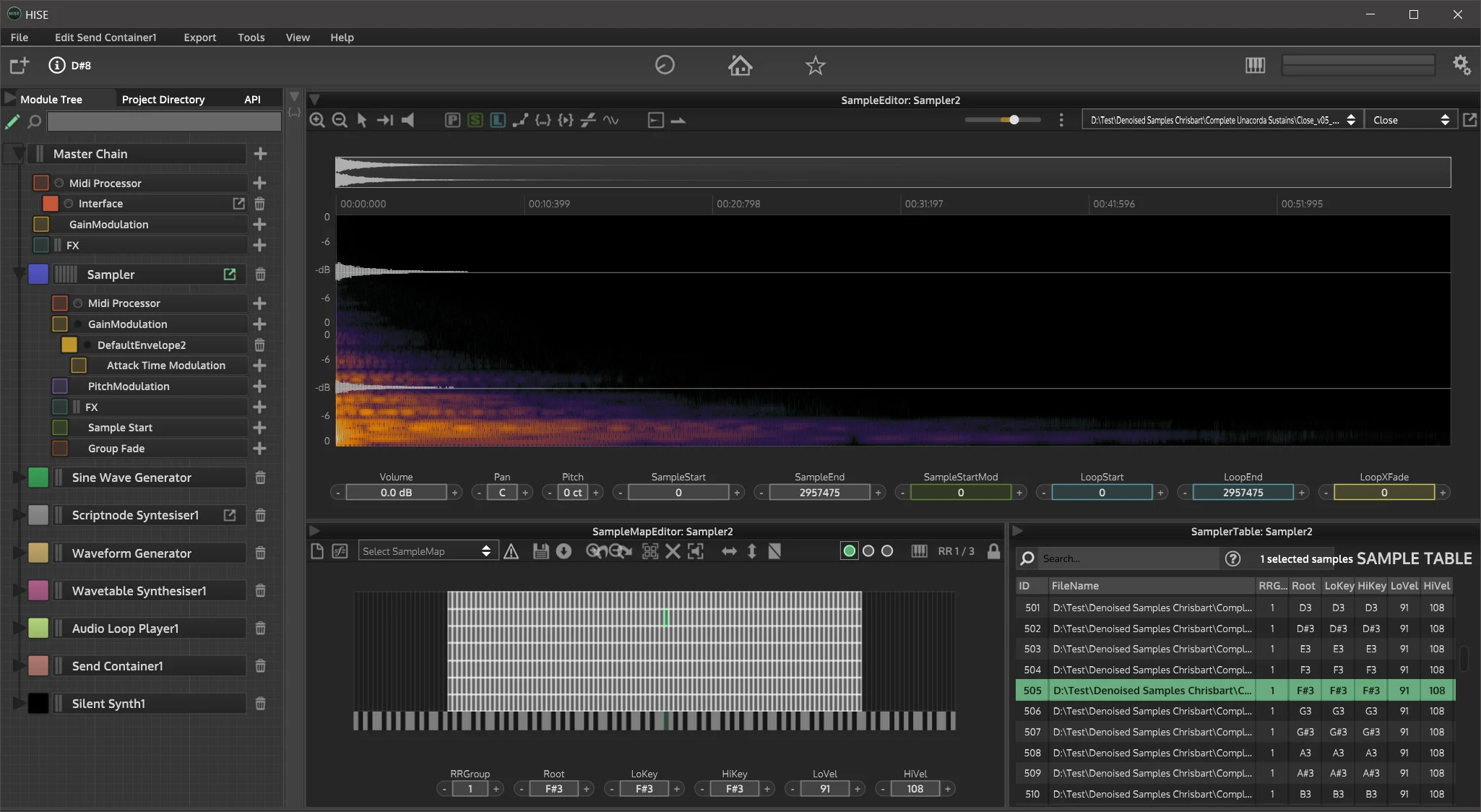
Sampler
With the HISE disk streaming engine and custom lossless audio codec you can create sample libraries that consume minimal memory and CPU resources. It features several modern sample library concepts such as Round Robin Groups, Lazy Loading, Dynamic Crossfades, and purgable multi-mic channels.
The Sampler is tightly coupled with the scripting engine, enabling you to dynamically control functions such as hot-swapping sample sets or changing properties of individual samples.
More info: Sampler Workspace Walkthrough | Sampler API
Scripting
HISE's scripting language, which is derived from Javascript, provides a contemporary development workflow. Although it has been optimized for real-time performance for writing custom MIDI processing modules, it features several improvements that facilitate ease-of-use and solid code organization, even for large UI scripting projects.
Every component in HISE, such as audio modules, samples, and DSP nodes, can be accessed and modified with the Scripting API. The built-in IDE tools, such as quick code navigation, breakpoints, console logging and live-variable-watch will significantly enhance your development flow.
More info: Scripting Reference | Scripting 101 Video
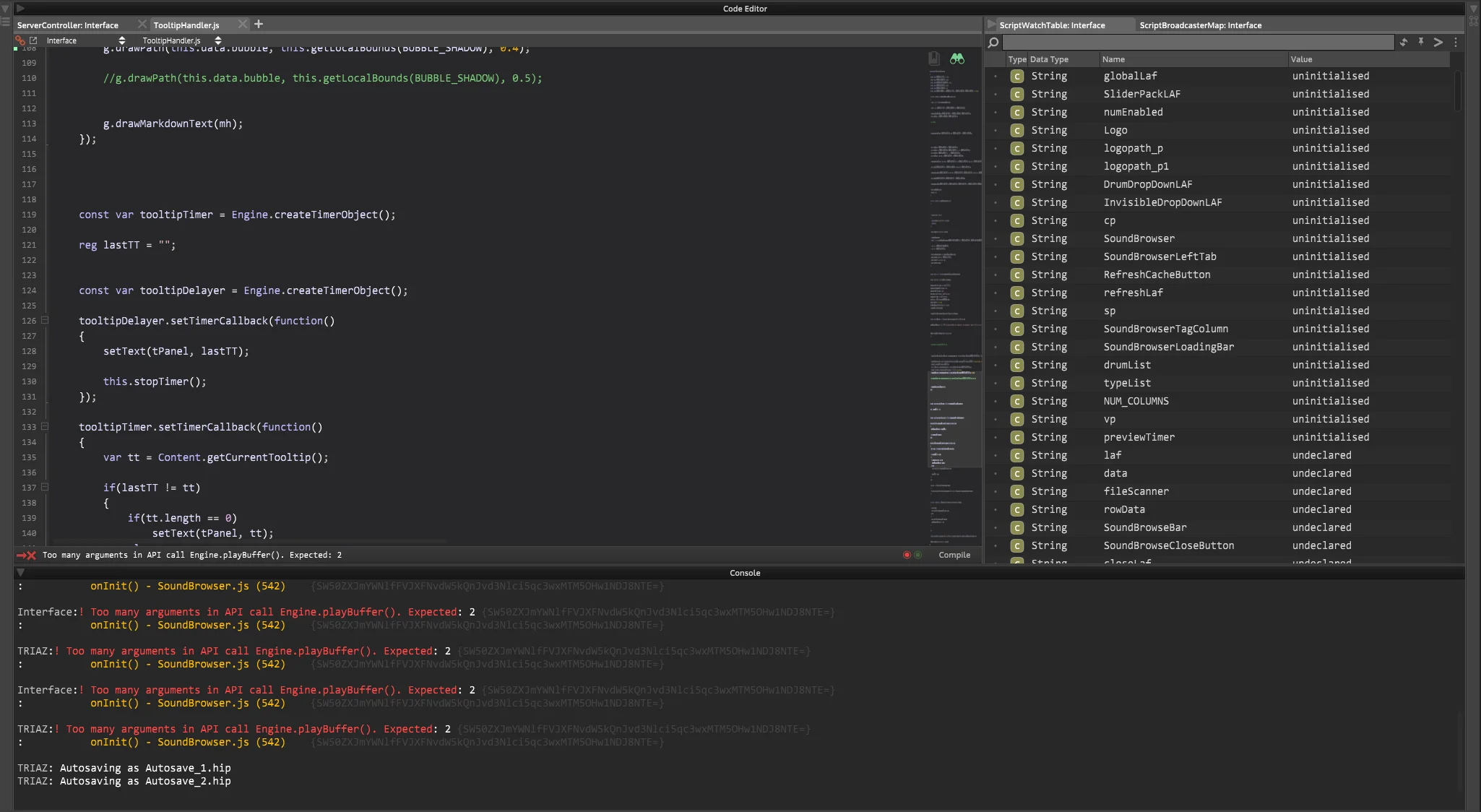
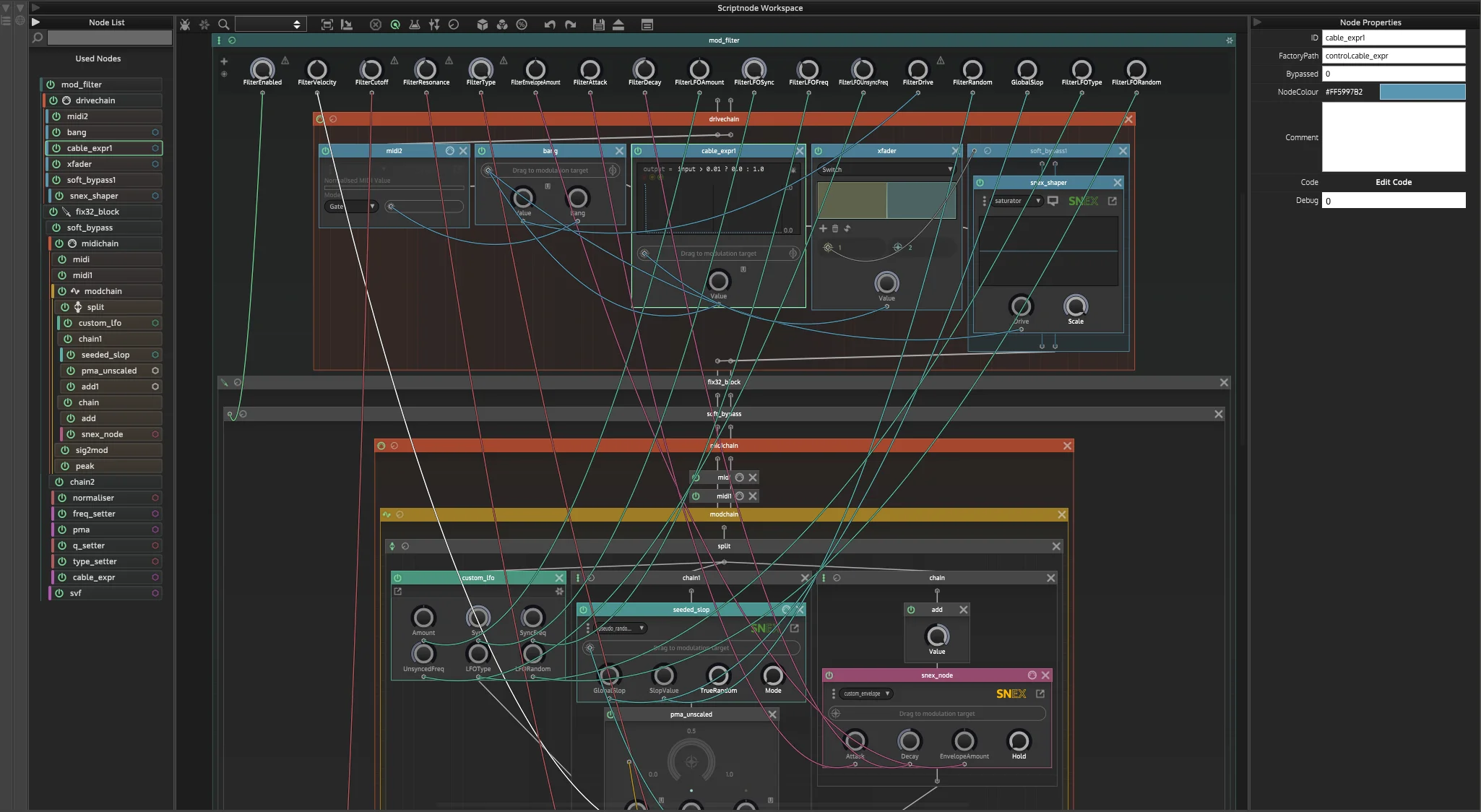
Scriptnode
Scriptnode is a visual programming environment within HISE that empowers you to build custom audio effects, modulators, or synthesizers using low-level DSP building blocks like delay lines or math operators. If dragging cables is not your cup of tea, you can also write DSP algorithms using a JIT compiler for a subset of C++ or import third party C++ classes.
Moreover, you can integrate DSP modules from other languages or applications, such as Faust and RNBO. Export your DSP algorithm as a static C++ class if you want to squeeze out the last CPU cycles.
More info: ScriptNode Reference
Interface Designer
Create the interface of your plug-ins with a workflow similar to that of graphic design applications: You can create, select, and manipulate UI elements using a drag-and-drop approach, modify properties, and structure them within a nested layer architecture while being able to preview the functional UI with a single click.
Additionally, HISE's scripting engine is constantly accessible, allowing you to customize any behavior, appearance, or property of the UI.
More info: [Interface Designer Reference] | [Watch Interface Designer Tutorial]
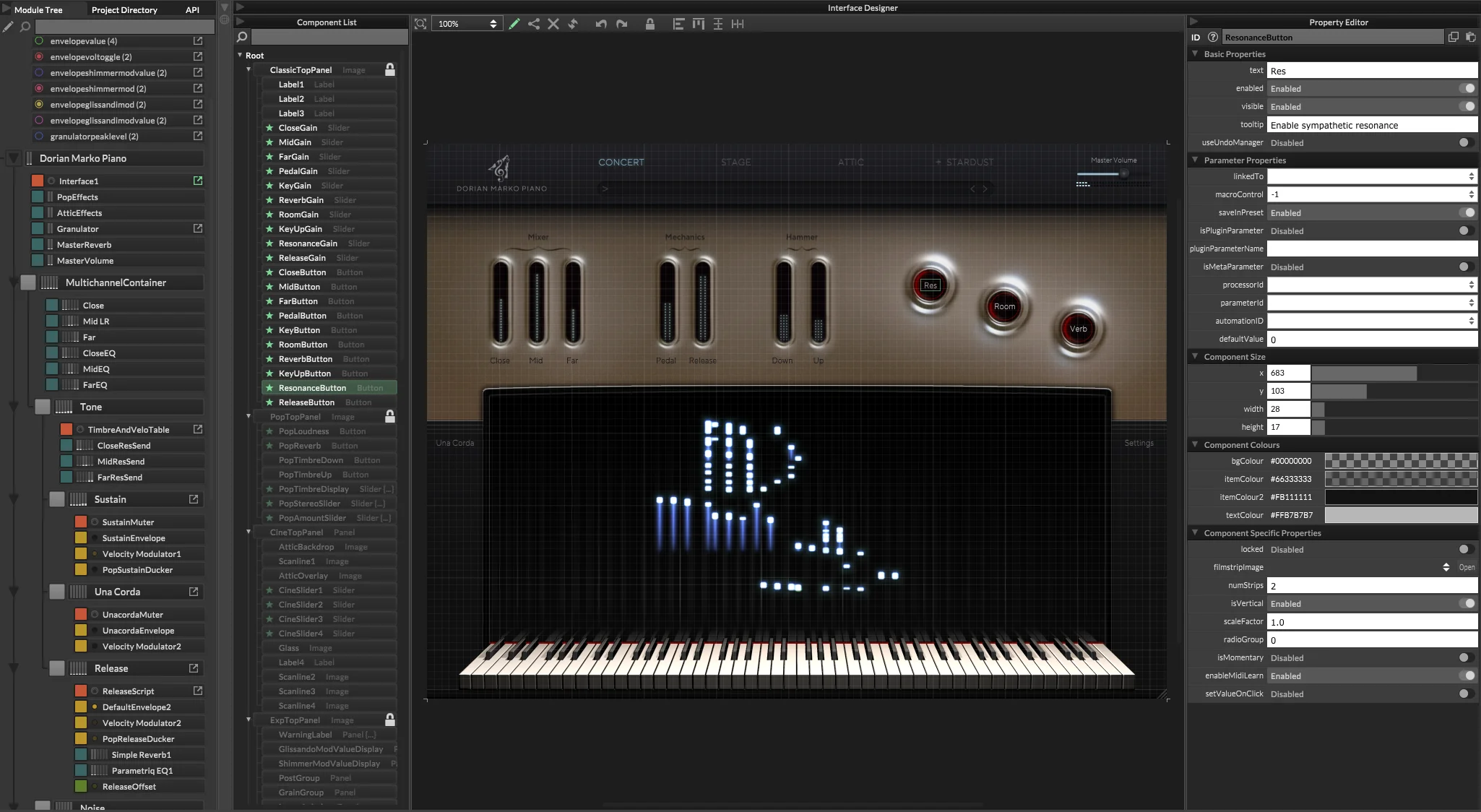
Deploy
Native Plugin
Compile your project as a native application or audio plugin using a C++ compiler toolchain.
- Create your own product installer.
- Use advanced features like scriptnode compilation or Faust DSP nodes.
- Modify the HISE codebase to optimize performance for your project.
- Compile and sign the binaries on each OS.
- Implement a custom copy protection solution.
- Incorporate third-party code and keep your IP secret.
Setting up the compilation process may seem intimidating at first, but there are videos available that demonstrate how to compile HISE on each supported platform: Once you've set it up, exporting your plugin becomes a one-click operation, plus you get the advantage of using the latest HISE version.
RHAPSODY Player Format
Export the plugin as a library for the RHAPSODY Player from Libre Wave.
- Quick route to your DAW
- Doesn't require you to set up a compile toolchain.
- Export it on your machine and use it on any OS that supports the RHAPSODY Player.
- You don't get the advantages and customizations that require a C++ compiler.
The RHAPSODY Player from Libre Wave is open source and freely available and can be considered as the official platform for loading HISE libraries. Since it is an open platform, it easy to import and modify RHAPSODY libraries with HISE. This makes your plugin more accessible and customizable compared to a native binary deployment.
Resources
 Knowledge Base
Knowledge Base
There is a vast amount of information available if you need to learn more about HISE. During development, these three places of information will become very important, so make sure you check them out properly.
User Manual
Dive into the Documentation to learn more about HISE, read up on specific topics and take a look at the full reference API.
Forum
On the HISE Forum you can find a vibrant community of developers which are eager to help you out if you can't find the answer in the existing 7000+ topics.
Video Tutorials
David Healey has made a vast amount of video tutorials for HISE covering different topics of varying complexity. Make sure to check out his Youtube Channel and subscribe to his Patreon if you want to get the latest videos.
 Open Source HISE Projects
Open Source HISE Projects
If you want to explore how a plugin is made in HISE, feel free to check out the repository of these open source projects. Note that for some of the third party projects you will have to contact the vendor to get the samples as they are usually not part of the repository.
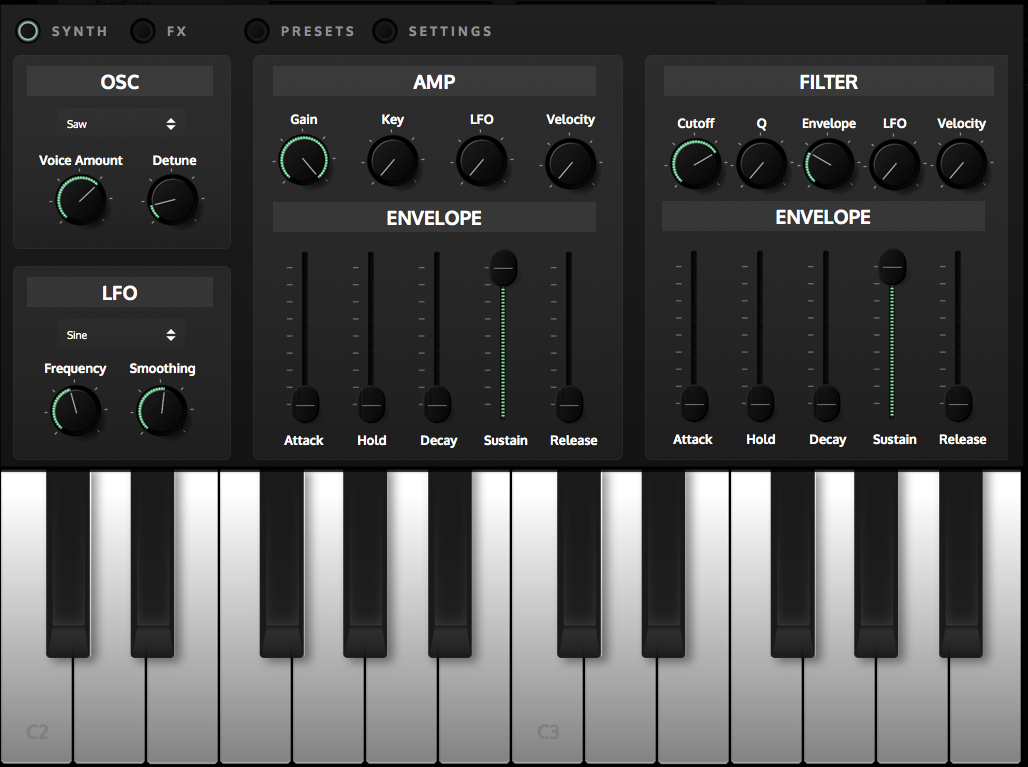
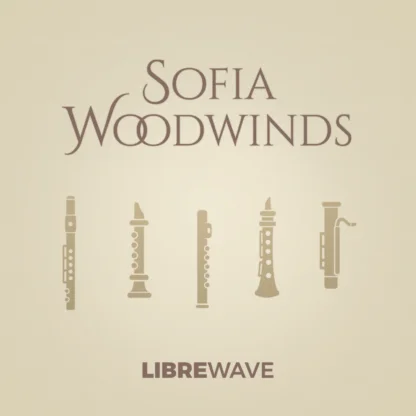
Libre Wave Sofia Woodwinds
A very thorougly sampled woodwinds library by Libre Wave with emphasis on realtime playability.
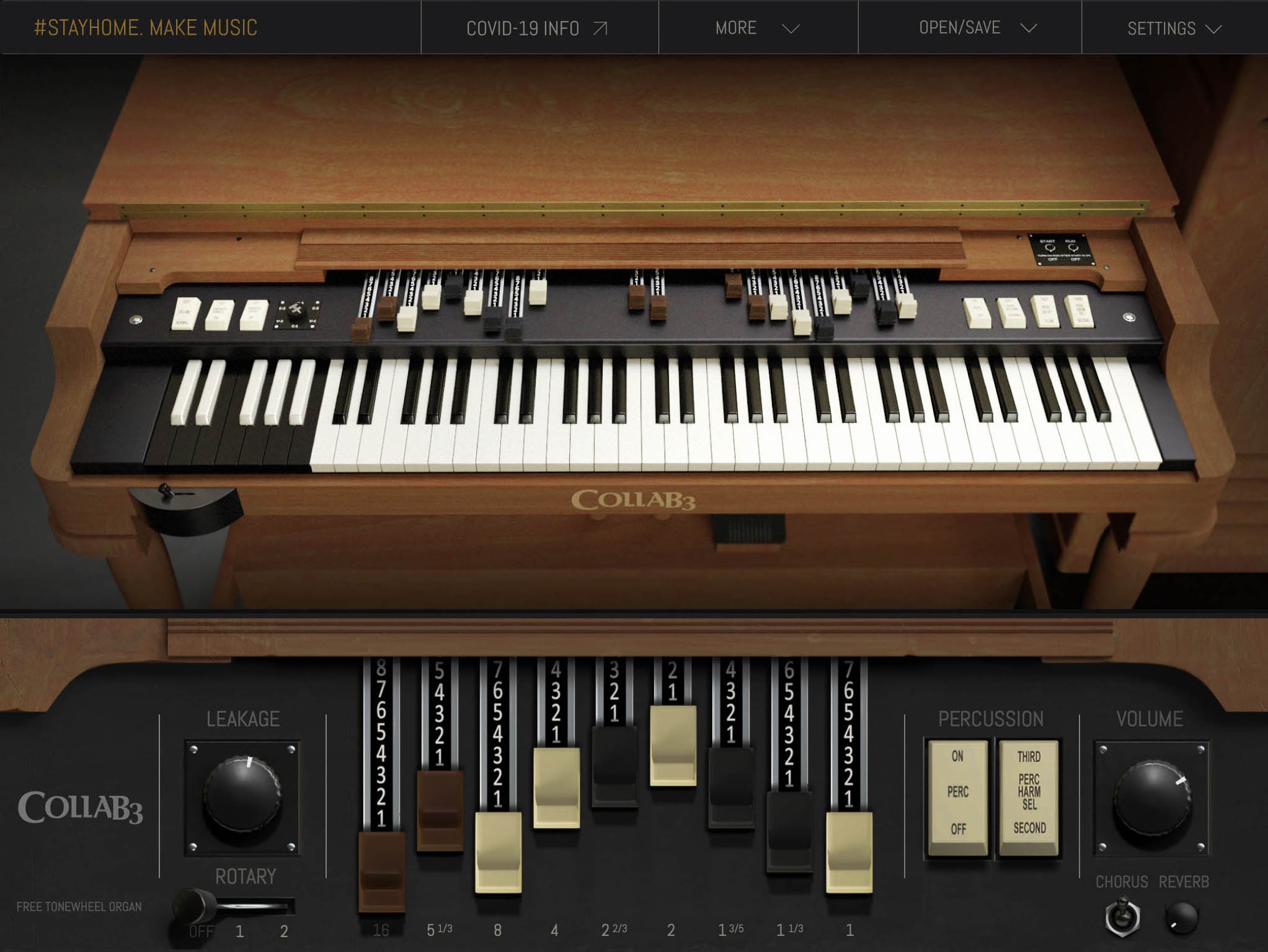
Collab B3
The CollaB3 organ is a collaboration of various HISE developers and features a detailed reproduction of noises, clicks, leakage, rotary speaker and tonewheel. Also chorus and reverb are included..

Orchestools
There are multiple open source projects made with HISE available at Orchestools that cover a broad range of sounds using CC licensed samples.

Sinuslabs REACH
REACH is modern creative Reverb that is made for synthetic sound sources made by Sinus Labs.
Showcase
Built with HISE
Triaz
by Wave Alchemy
Elevate your music with Triaz, an innovative drum engine designed for unparalleled beat creation.
With lightning-fast polyrhythmic sequencing, advanced drum layering, dynamic mixing tools, and intelligent randomization, Triaz redefines the art of drum production.
PercX
by Auddict
Explore hundreds of instruments with unlimited flexibility. 500+ instruments with multiple Round Robin variations and up to eight dynamic layers. Play them as fully customizable loops or deep sampled library.
CUBE
by Lunacy Audio
An award-winning virtual instrument, CUBE brings endless inspiration to modern electronic, hip hop, pop, and genre-bending tracks. Create stunning new sounds and take your tracks to the next level with CUBE’s creative 3D sample-morphing engine.
Pawn Shop Comp
The Pawn Shop Comp 2.1 is a professional tool that will make a huge difference in the quality and impact of your mixes. It sounds great on any sound source and in virtually any application.
Handy Drums
Maple shell, the most versatile sound. An absolute standard, a perfect "all around" studio drum kit for use in any music genre. The options are endless, imagination being the only limit.
Need 533 EQ
by Noise Ash
High-performance British style analog eq unit which has a very sweet musical tone that doesn’t sound muddy or harsh even in extreme settings.
Bardzo
Bardzo brings a unique grand piano with two strings per key and no resonance board under your fingertips. Bigger than the Una Corda, more intimate than your standard posh grand.
Atma
by MNTRA
Atma is a collection of sacred sound instruments obtained by MNTRA's award winning founder & composer, Brian D’Oliveira, during his many pilgrimages to holy sites around the world.
Meta Piano
by Sampleson
MetaPiano is the first Spectral Modeled Grand Piano out there. It was built upon real sound captures from a Japanese Concert Grand Piano and meticulously rebuilt by math algorithms.
Licensing
HISE is distributed under a dual-license model for both, open-source and proprietary projects. Releasing a project under the GPL license is completely free of charge. If you want or need to avoid the freedom of the GPL license, you can acquire a commercial HISE license.
 Open Source
License
Open Source
License
The GPL v3 open-source license grants you complete freedom to create, distribute, and sell your own work while adhering to the same GPL licensing model and its requirements.
To distribute your plugins you can either offer compiled binaries yourself or create a library for the free Libre Wave Rhapsody player, if you want to skip the compilation procedure.
GPL Project
- dedicated plugin / app binary
- compilation for every OS required
- fully customizable UI
Rhapsody Expansion
- load your HISE project in Rhapsody
- works on all platforms, no compilation necessary
- start out with a readymade template to ensure consistency across different Rhapsody libraries
Open Source License FAQ
 Commercial License
Commercial License
For most commercial projects a proprietary license is the most viable option because it permits the confidentiality of the source code. The HISE commercial license is a company-wide license that allows you to release as many proprietary projects as you want as long as your license subscription is active.
The licensing fee for proprietary usage is a monthly fee determined by the yearly revenue that you've made with HISE based products and is categorized into two tiers:
HISE INDIE License
[Yearly payment option]- less than 50.000 € annual revenue made with HISE-based products.
- 50€ / month (or 600€ / year), VAT excluded
HISE PRO License
[Yearly payment option]- more than 50.000 € annual revenue made with HISE-based products
- 300€ / month (or 3600€ / year), VAT excluded
Please be aware that if you intend to use HISE for a proprietary product, obtaining a commercial JUCE license is necessary, as HISE is based on JUCE and JUCE is using a similar dual-licensing model. For a preview of the HISE license agreement, click here.
Commercial License FAQ
Besides getting a license for JUCE, you don't need to acquire anything else. You might need to register a few accounts at various companies to get their frameworks and tools (Microsoft, Apple and Intel) for the compilation process, but they are all free of charge.
Which JUCE license you will need does depend on your company's revenue - also there are a few subtle differences between how HISE and JUCE determine your revenue, so make sure to read the EULA from JUCE to figure out the exact model. Just be aware that the free JUCE Personal license shows a splash screen that is deactivated by default in the HISE codebase, so if you're planning to use this model, you will need to manually reenable the splash screen.
If the FAQ section didn't cover your question or you want additional information about the licensing scheme, please get in contact with us info@hise.audio
 Copy Protection
Copy Protection
If you're looking for a pre-built copy protection solution for your proprietary product, you can check out HISE Activate. It natively integrates with HISE and provides a simple serial-key interface with your webshop and resellers.
About
The History of HISE
The development of HISE started in 2014 as an experimental framework with the goal to create a virtual clarinet to combine wavetable synthesis with sample playback. Realizing the lack of available tools for this kind of project, the priority shifted from creating a single virtual instrument towards assembling a reusable collection of building blocks to let other developers realize their ideas without having to start from scratch or even learn C++.
Following the licensing concept of the underlying JUCE framework, the decision to publish HISE as an open source toolkit helped setting it apart from its proprietary competitors and HISE continues to be the major open source option in a field that has been dominated for years by a single company.
While the virtual clarinet that sparked the creation of HISE never saw the light of day, the 1.0 version of the framework was published in 2017. Since then, the industry adoption of HISE has slowly but steadily risen and HISE is now the foundation of products that generated more than 5 million USD revenue.
Meet the HISE Team
Christoph Hart

Christoph Hart, born in
1985 and currently living in Berlin,
Germany, is a composer and the main developer of HISE.
Initially, he began working on HISE
during breaks between theatre productions. However, over time, his focus has shifted, and he now
creates music for theatre productions during breaks from working on HISE.
In addition to the work
on the HISE codebase he is collaborating with different companies to build audio plugins.
Dominik Mayer

Dominik Mayer, born 1986,
and also living in Berlin,
is an artist, musician and wingman developer of HISE.
In the beginning he started supporting HISE
with UX/UI feedback and maintenance work, and along the way has grown into his role as a full-stack
front to backend dev.
When he is not busy fixing server issues, he is helping out in several plugin collaborations and is
providing generalist assistance to the HISE cause.
Mailing List
If you want to stay informed about the latest news & releases: Sign up on the HISE mailing list.



